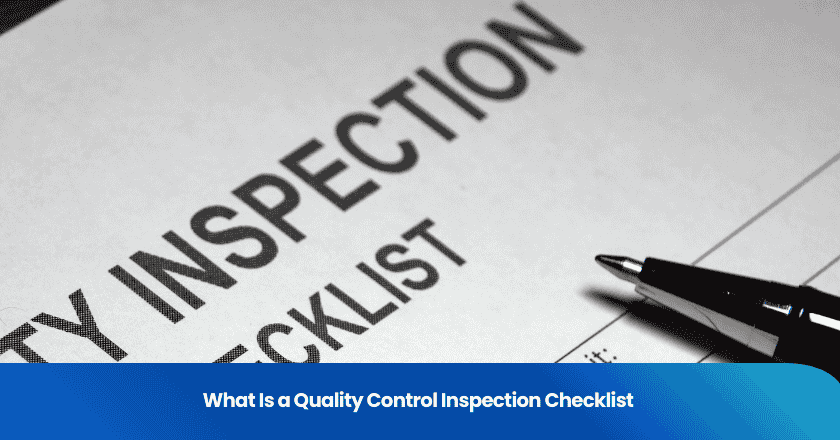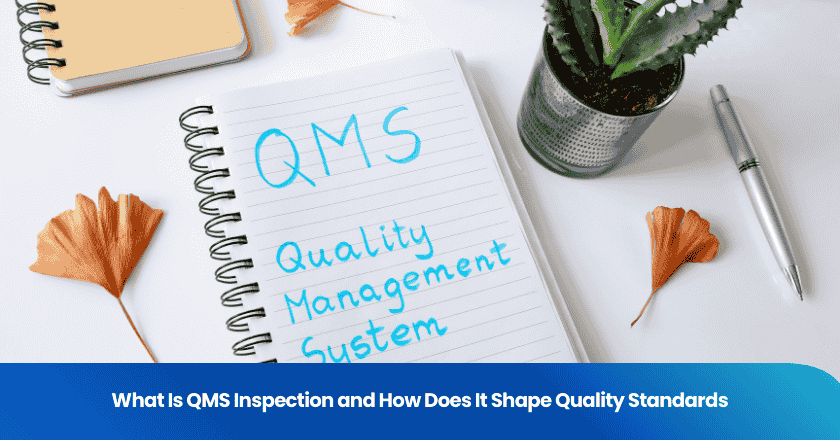
A quality control inspection checklist serves as a structured guide that helps you verify whether a product, service, or process meets defined standards. You use this checklist to ensure that every detail aligns with expectations and requirements.
- You can collect information about product performance compared to established standards.
- You can correct poor quality to maintain standards.
- You can build a reputation by delivering high-quality products.
- You can identify sources of failure in finished products.
This tool supports your efforts to achieve consistent quality and reliability in your operations.
Quality Control Inspection Checklist Basics
What Is a Quality Control Inspection Checklist
You use a quality control inspection checklist to verify that products, services, or processes meet specific standards. This tool guides you through each step of the inspection, ensuring that you do not overlook critical details. When you apply a qc inspection checklist, you create a systematic approach to quality inspection. You can document findings, compare results against requirements, and make informed decisions about product quality.
A quality inspection checklist includes essential elements that help you maintain consistency and compliance. You check product specifications and tolerances to confirm that dimensions and functions match customer expectations. You verify materials and suppliers to ensure that incoming components meet quality control standards. You review packaging and labeling to prevent errors before products leave your facility. You record documentation and traceability, linking inspections to batch numbers or work orders. You also note approval and disposition steps to resolve any issues.
Tip: An effective qc inspection checklist helps you catch defects early, reduce rework, and improve customer satisfaction.
Key Features and Structure
You design a qc inspection checklist to fit the needs of your industry and the type of inspection you perform. In manufacturing, you focus on inspecting materials, parts, and finished goods. You might use statistical process control to monitor production and acceptance sampling for large orders. In software development, you emphasize testing functionalities and usability, including coding standards and user acceptance testing. Service industries prioritize compliance with protocols and customer satisfaction metrics.
You can organize your inspection checklist by inspection type. The table below shows common types and their applications:
| Type of Inspection | Description |
|---|---|
| Pre-Production Inspection | Conducted before manufacturing to assess factory readiness and material quality. |
| In-Production Inspection | Quality checks during production to identify defects early. |
| Pre-Shipment Inspection | Checks on finished goods to ensure they meet quality standards before delivery. |
| Container Loading Control Inspection | Verifies quantity and quality of goods being loaded, ensuring proper labeling and packaging. |
| Production Monitoring | Daily checks at the manufacturing site to enforce quality standards and eliminate defects. |

You follow international standards to create an effective quality checklist. ISO 9001 focuses on quality management systems. ISO 14001 covers environmental management. ISO 31000 addresses risk management. ISO 13485 applies to medical devices. FSSC 22000 ensures food safety and quality throughout the supply chain.
Digital checklists offer advantages over paper-based versions. You achieve higher data accuracy and precision. Real-time tracking allows you to monitor inspections as they happen. You document every step for accountability. Automation reduces human error and streamlines compliance processes. You can make immediate adjustments during inspections and communicate more effectively with your team.
When you build an effective qc inspection checklist, you support quality inspection and product quality at every stage. You ensure that your processes align with industry standards and customer expectations.
How a QC Inspection Checklist Works
A qc inspection checklist acts as your standardized, step-by-step guide for quality inspection. You use it to ensure every product, service, or process meets your quality standards. Imagine you work in a manufacturing plant. You receive a shipment of finished goods. Before approving the shipment, you follow your quality inspection checklist. You check each item for defects, verify dimensions, confirm packaging, and review documentation. This approach helps you catch issues early and maintain product quality.
Main Components
You build your qc inspection checklist with several key components. Each part plays a specific role in the inspection process. The table below outlines these components and their contributions:
| Component | Contribution to Inspection Process |
|---|---|
| Workmanship and Acceptable Quality Limits (AQL) | Evaluates craftsmanship, ensuring proper assembly and defect absence, while setting a threshold for acceptable defects. |
| Functionality and Performance | Ensures the product performs as intended through testing of its functional components. |
| Dimensions and Measurements | Verifies that product dimensions align with specifications, ensuring proper fit and function. |
| Packaging and Labeling | Confirms packaging integrity and proper labeling, which is crucial for protection and consumer information. |
| Documentation and Certifications | Ensures all necessary documents are present and accurate, reducing regulatory discrepancies. |
| Quantity Verification | Confirms that the actual quantity matches expectations, preventing inventory discrepancies. |
| Visual Aesthetics | Evaluates visual elements for accuracy, ensuring alignment with design specifications and consumer expectations. |
You rely on these elements to create an effective quality checklist. Each component supports your goal of consistent quality inspection and compliance.
Inspection Process Steps
You follow a clear sequence when using a qc inspection checklist. This process ensures you do not miss any critical steps during quality inspection:
1. Define objectives, requirements, and quality standards.
2. Identify and analyze key processes.
3. Draft the QA & QC standard operating procedures (SOPs).
4. Review, implement, and monitor the inspection checklist.
5. Train staff thoroughly on the inspection process.
6. Focus on continuous improvement.
You can see how this process works in a real-world scenario. For example, you might choose the type of manufacturing audit you need, conduct a full-scope evaluation, and then implement corrective actions such as updating SOPs or training employees. This method ensures your qc inspection checklist remains effective and adaptable.
Note: Quality personnel need a deep understanding of quality control principles. Scenario-based training, mock inspections, and role-playing exercises help prepare your team for real-world quality inspection challenges.
By following these steps and using an effective qc inspection checklist, you strengthen your quality inspection process and support consistent product quality.
Importance of Quality Inspection and Checklists
Why Quality Inspection Matters
You play a crucial role in maintaining product quality and customer satisfaction through quality inspection. When you invest in prevention, you see a better return on investment compared to other quality approaches. By preventing defects, you eliminate downstream costs such as rework, scrap, and customer complaints. For example, a company with a 3% defect rate can face significant costs, including rework at $50 per defective unit, scrap costs of $100 per unit, and warranty claims averaging $500 each. Lost customers can lead to thousands in lost revenue. The cost of poor quality can reach 10% to 20% of annual revenue, which means a $100 million business could waste up to $20 million each year. Effective quality inspection processes not only identify defects but also protect your reputation and ensure compliance with regulations.
Quality inspection supports your efforts to deliver consistent, high-quality products and services, building trust with your customers.
Recent studies show that organizations recognize the importance of quality inspection and quality assurance in improving both service quality and customer satisfaction.
Importance of Quality Checklists
You rely on a quality control inspection checklist to ensure every step in your process meets quality standards. In regulated industries such as pharmaceuticals or aerospace, quality checklists provide consistency across audits, departments, and sites. They help you prepare faster, reduce manual effort, and strengthen regulatory readiness. You can streamline evaluations and ensure comparability across multiple audits. Quality checklists also provide documented evidence for regulators, making audits smoother and more efficient.
Benefits for Consistency and Compliance
When you use a qc inspection checklist, you ensure all necessary steps are completed, which is essential for compliance in regulated industries. These checklists help you maintain consistency and reduce errors, especially in complex or repetitive tasks. You find that checklists are a core part of many ISO standards for quality management systems. They provide a structured approach to verifying and maintaining standards, helping you prevent non-compliance and avoid costly mistakes. A quality inspection checklist serves as a straightforward way to document compliance, making audits and inspections smoother.
- Improved production efficiency ensures on-time deliveries of quality products.
- Cost optimization enhances resource utilization and minimizes errors.
- Winning customer trust guarantees product quality and fosters loyalty.
- Accelerating business growth results from consistent quality and compliance.
- Better work environments reduce risks and hazards for workers.
- Lower non-conformance ensures final products meet initial design specifications.
- Greater supply chain efficiency provides visibility and control over processes.
An effective qc inspection checklist supports your continuous improvement initiatives. Regular evaluations keep your checklist relevant and effective, aligning with the philosophy of continuous improvement. By using an effective quality checklist, you reinforce your commitment to quality assurance and product quality at every stage.

Creating and Using a Quality Inspection Checklist
Steps to Build a Checklist
You can build an effective qc inspection checklist by following a structured approach. Start by defining the purpose of your inspection. Identify potential defects based on product characteristics and categorize them as minor, major, or critical. Organize your checklist into clear sections, such as Packaging & Labeling, Visual Inspection, and Functional Testing. Gather input from all stakeholders to ensure you cover every quality requirement. Maintain consistency by using the same checklist across all locations and update it regularly to reflect new standards. Always verify safety compliance by checking equipment and protocols.
Tip: Involve team members from different departments to make your quality inspection checklist comprehensive and relevant.
Best Practices for Implementation
To maximize the effectiveness of your qc inspection checklist, tailor it to each project or product. Provide thorough training for your team so everyone understands how to use the checklist. Maintain detailed documentation, including photos and notes, to support accountability. Review and update your checklist regularly to keep up with changes in standards or project scope. Digital tools can streamline the process, offering real-time updates and reporting. For example, a manufacturing quality inspection checklist benefits from digital platforms that improve accuracy and efficiency.
Common Mistakes to Avoid
Avoid common pitfalls when creating or using a quality inspection checklist for manufacturing or other sectors. Lack of preparation can lead to missed expectations and critical issues. Insufficient training may cause inspectors to overlook important quality issues. Relying on personal judgment instead of objective criteria introduces subjectivity and inconsistency. Overreliance on technology can also be risky; balance digital tools with human oversight. In the food product quality inspection checklist or construction quality control inspection checklist, always ensure clear procedures and regular staff training.
Note: Customize your checklist for each industry. For example, a quality inspection checklist for manufacturing focuses on product quality and process control, while a food product quality inspection checklist emphasizes hygiene and safety standards.
A quality control inspection checklist gives you a reliable way to verify that your products or services meet required standards. Using checklists supports quality assurance and consistency in every process. When you apply these tools, you benefit from:
- Earlier defect identification and reduced rework costs
- Consistent documentation and faster issue resolution
- Improved accountability and regulatory compliance
Industry leaders highlight these long-term values:
| Key Takeaway | Description |
|---|---|
| Consistency and Quality | Ensures uniformity and high standards, minimizing errors and compliance issues. |
| Time Savings | Streamlines inspections and data collection. |
| Enhanced Features | Improves usability and accuracy with digital tools. |
| Empowerment of Workers | Enables frontline teams to improve processes quickly. |
Apply these best practices in your operations. Systematic quality checks help you build a culture of excellence and drive lasting success.
FAQ
What is the main purpose of a quality control inspection checklist?
You use a quality control inspection checklist to verify that products, services, or processes meet specific standards. This tool helps you maintain consistency, reduce errors, and ensure compliance throughout your operations.
How often should you update your quality inspection checklist?
You should review and update your checklist regularly. Changes in standards, processes, or regulations require immediate updates. Frequent reviews help you keep your checklist relevant and effective.
Can you use digital tools for quality inspection checklists?
You can use digital tools to streamline inspections. Digital checklists improve accuracy, enable real-time tracking, and simplify documentation. Many industries now rely on digital solutions for efficiency and compliance.
What are common mistakes when using a quality control checklist?
You may overlook training, rely too much on technology, or skip steps. Always provide clear instructions, involve your team, and balance digital tools with human oversight to avoid these mistakes.
How do you adapt a checklist for different products or services?
You customize your checklist by identifying unique requirements for each product or service. Consult stakeholders, review standards, and adjust sections to fit specific needs. Regular updates ensure ongoing relevance.
Grow your business with TradeAider Service
Click the button below to directly enter the TradeAider Service System. The simple steps from booking and payment to receiving reports are easy to operate.


